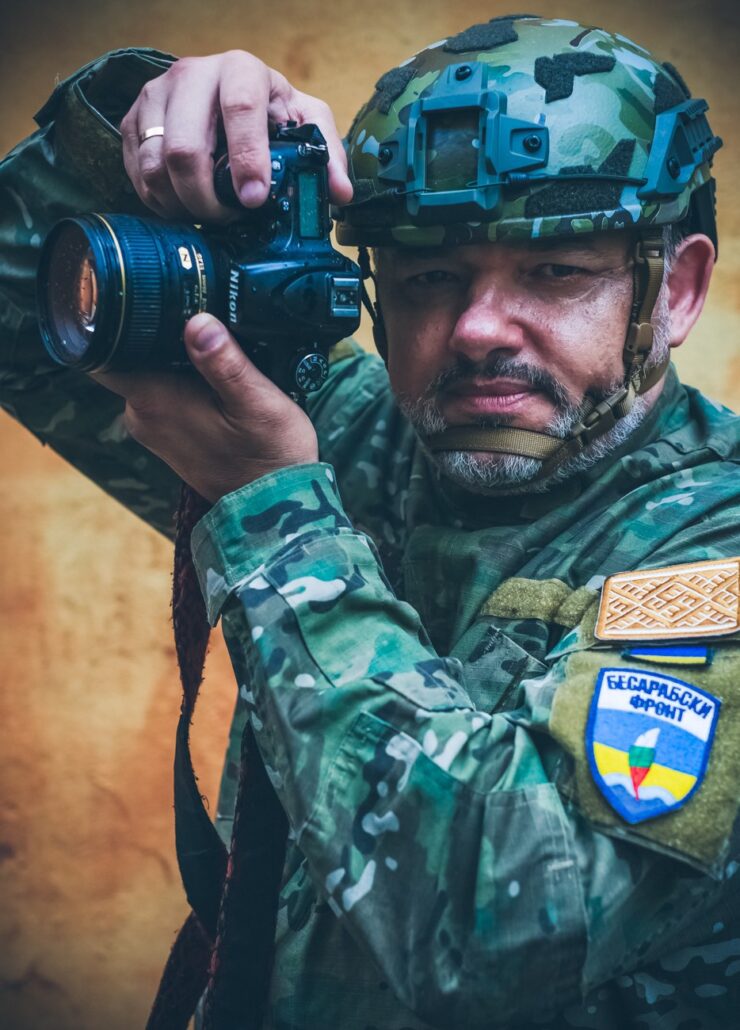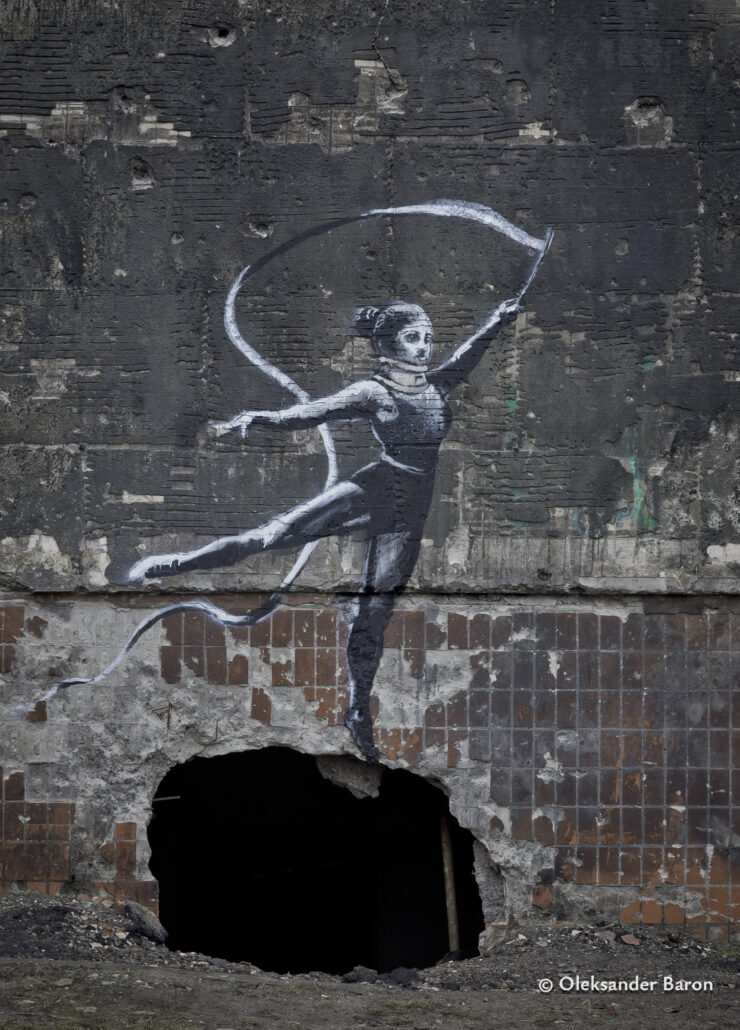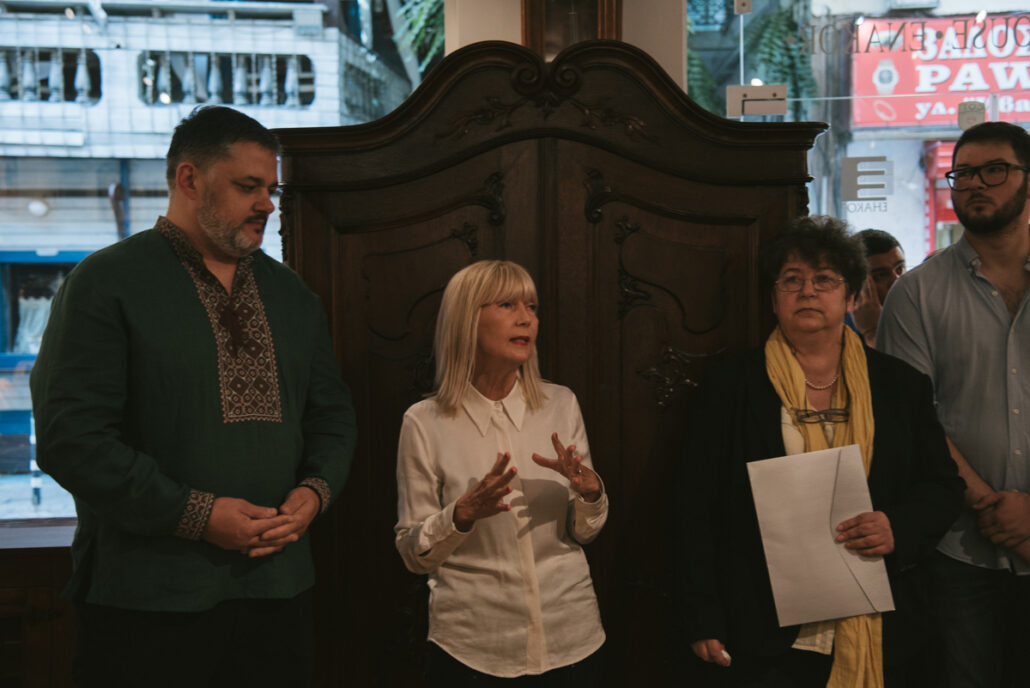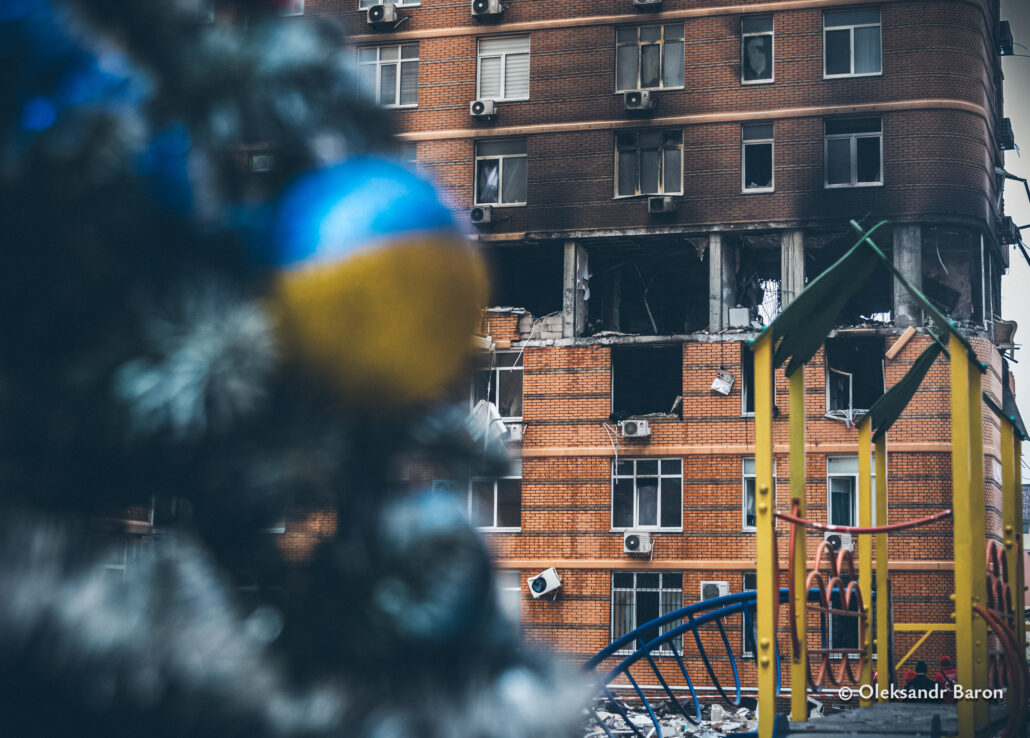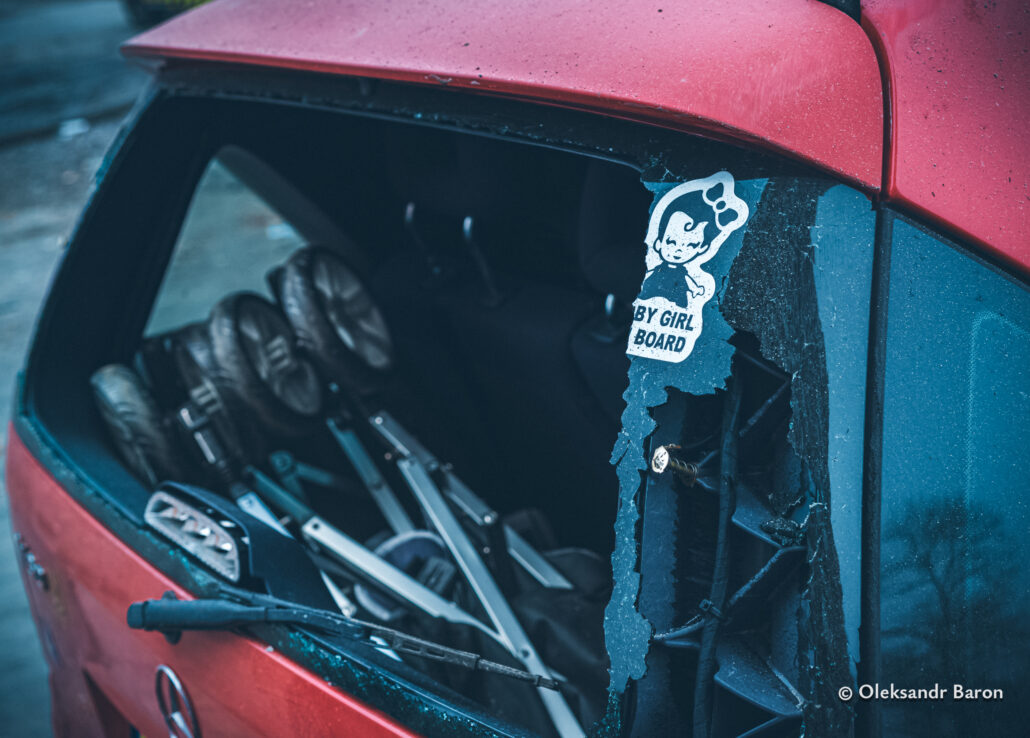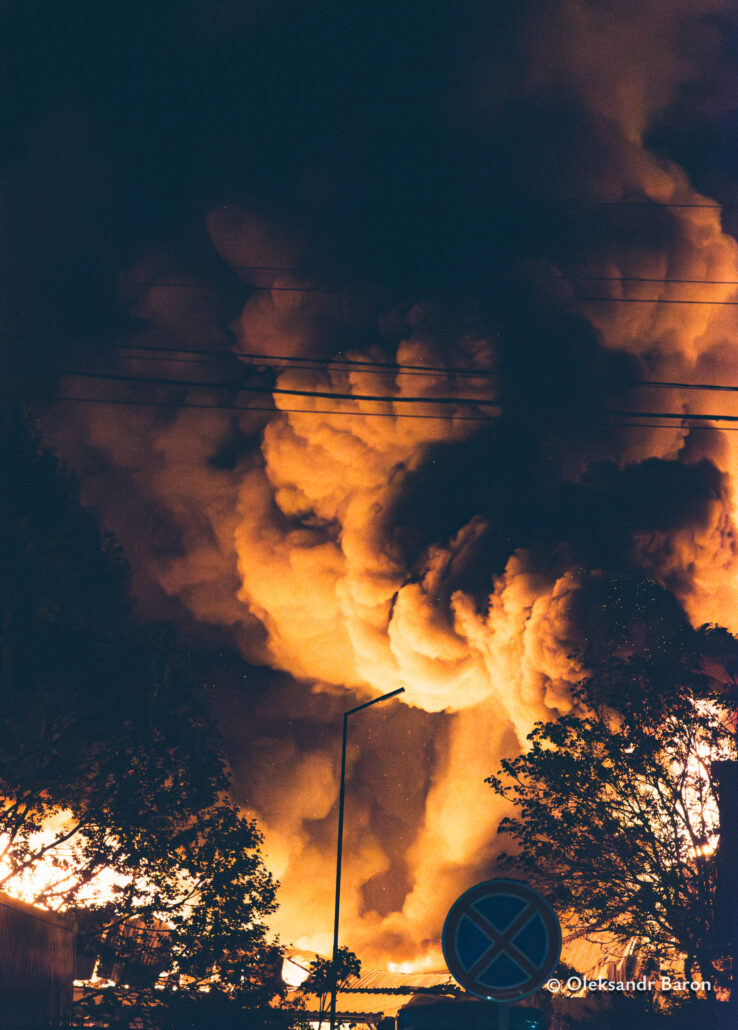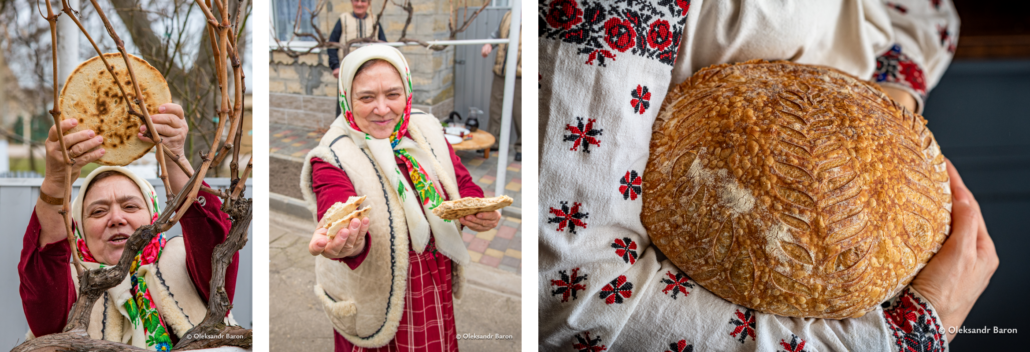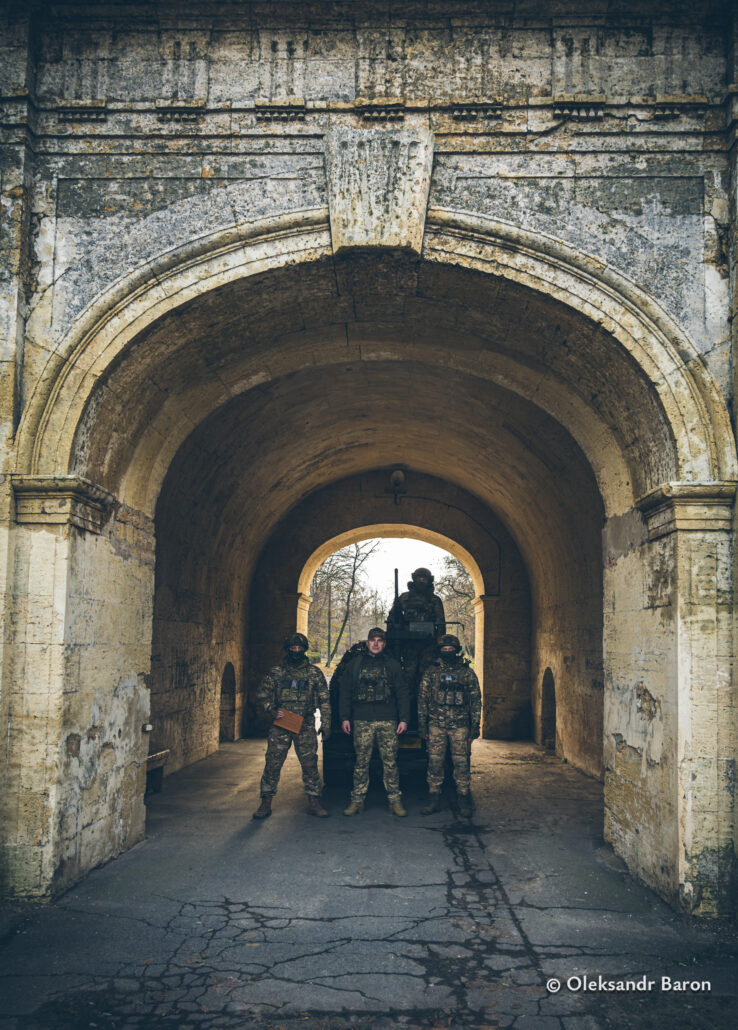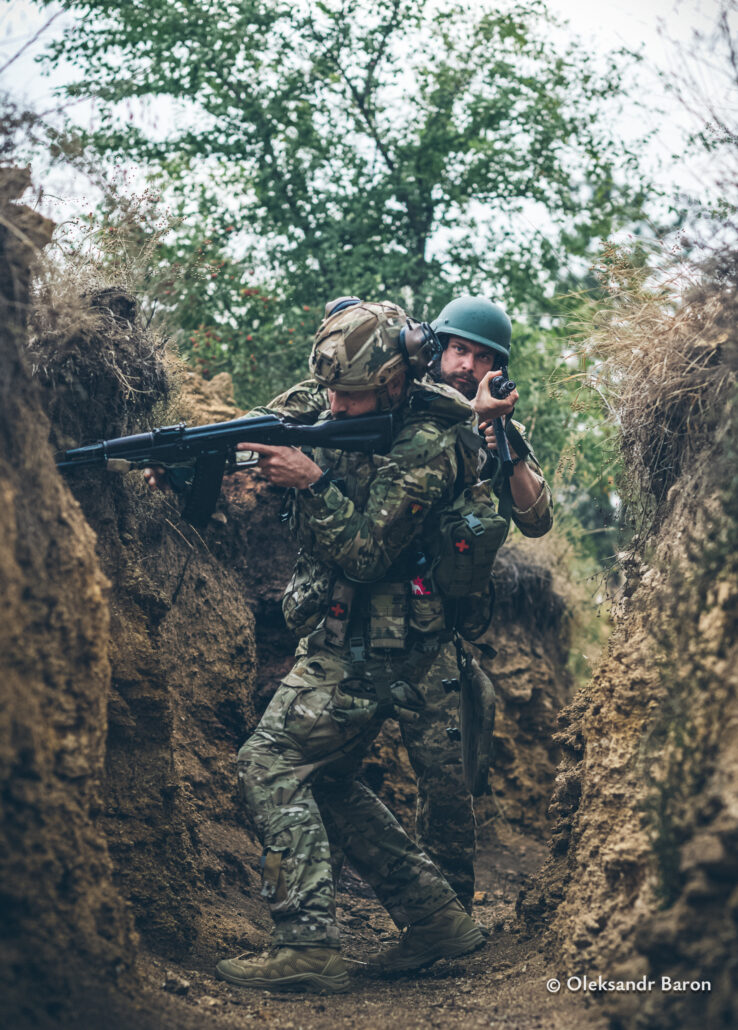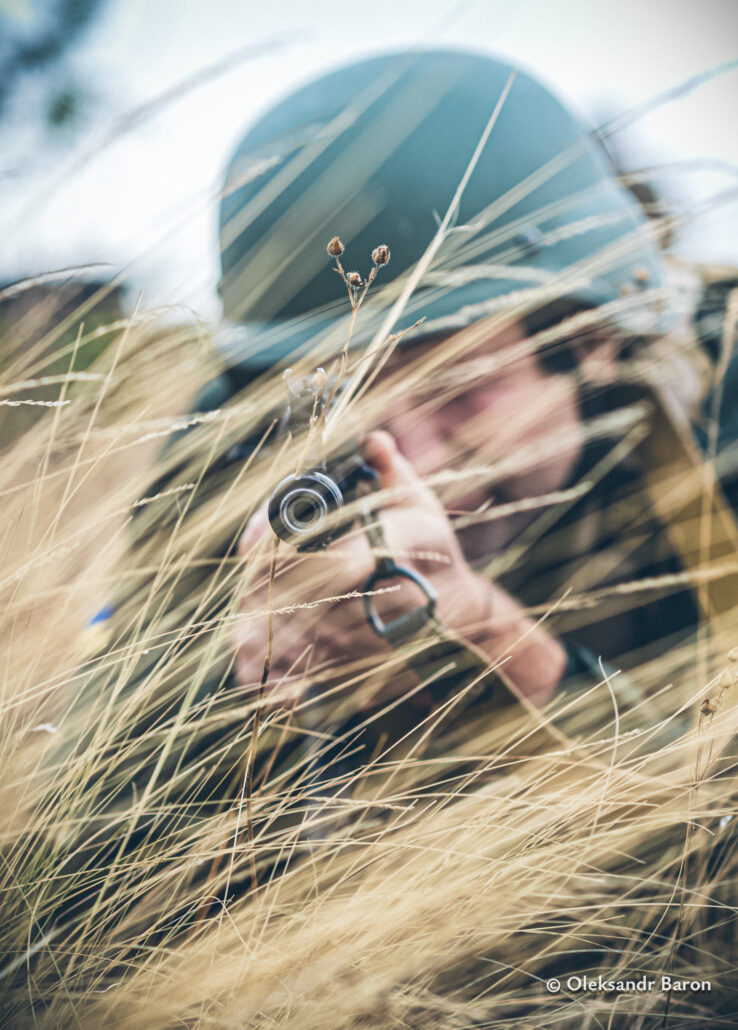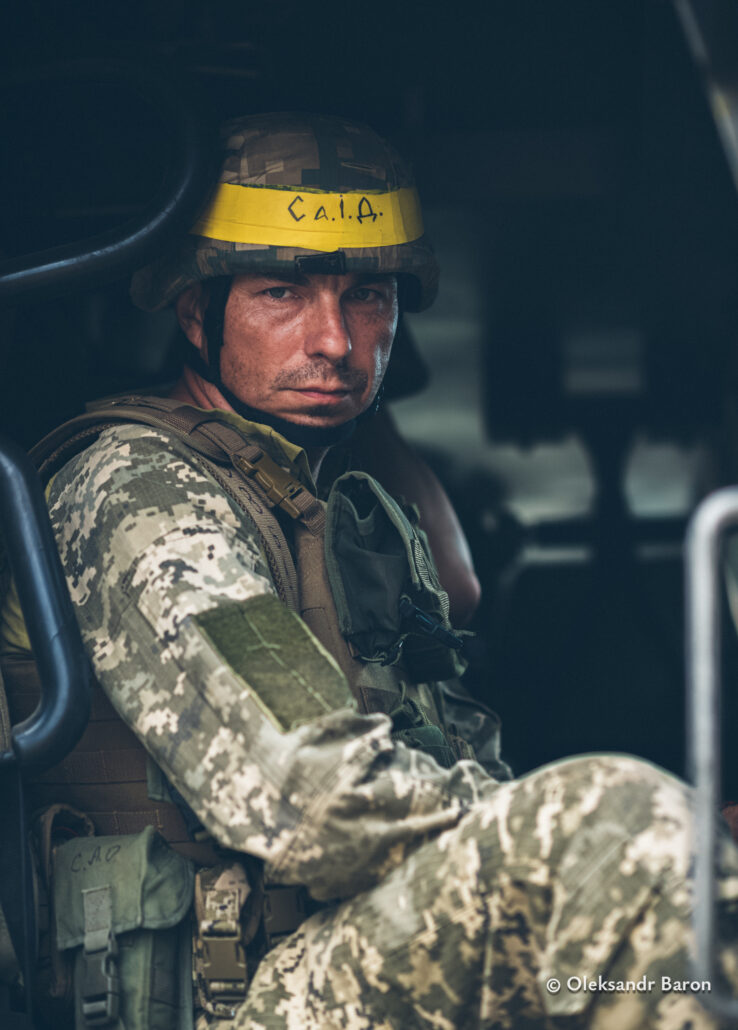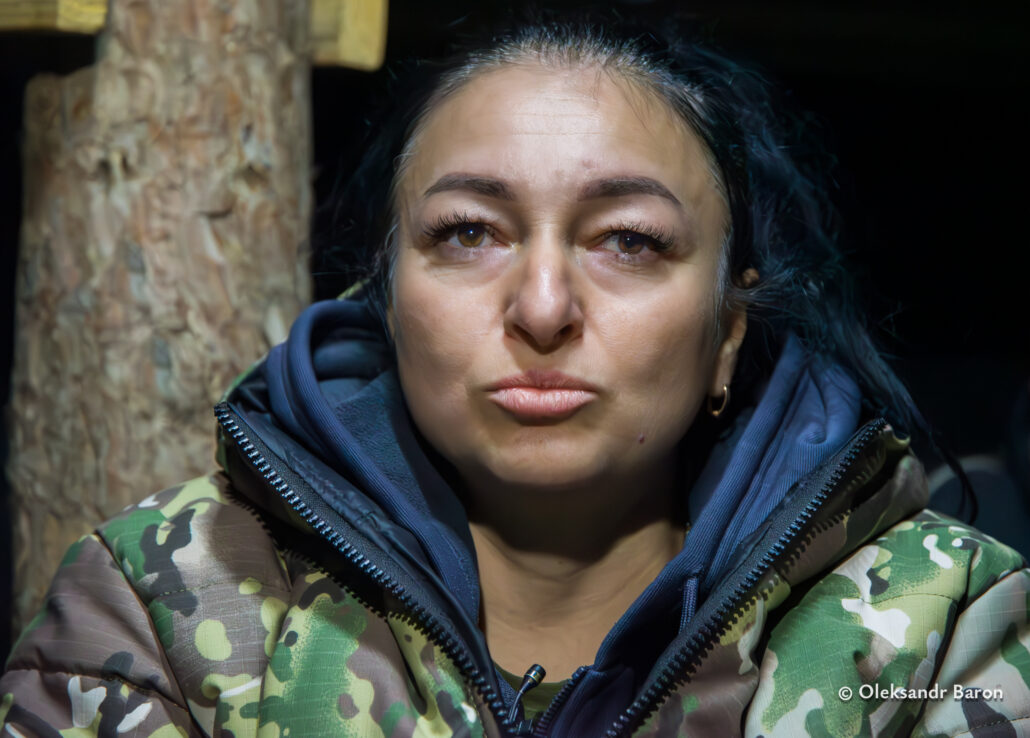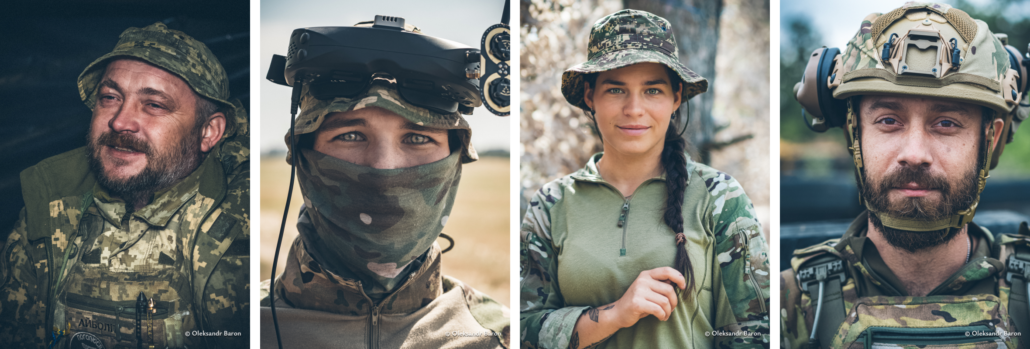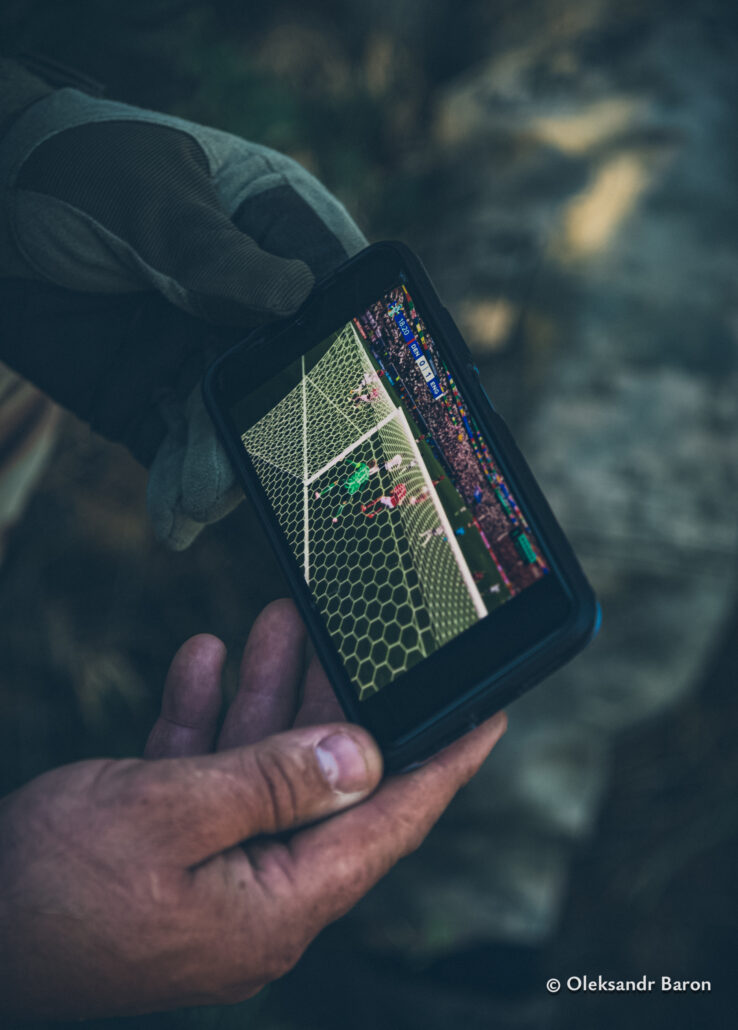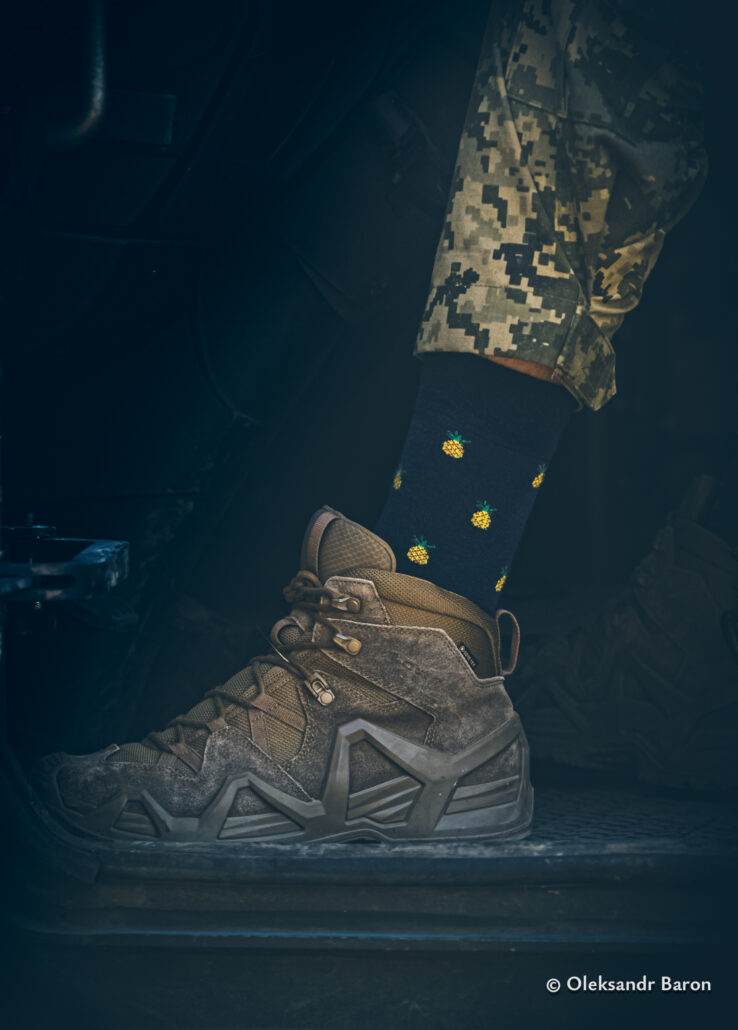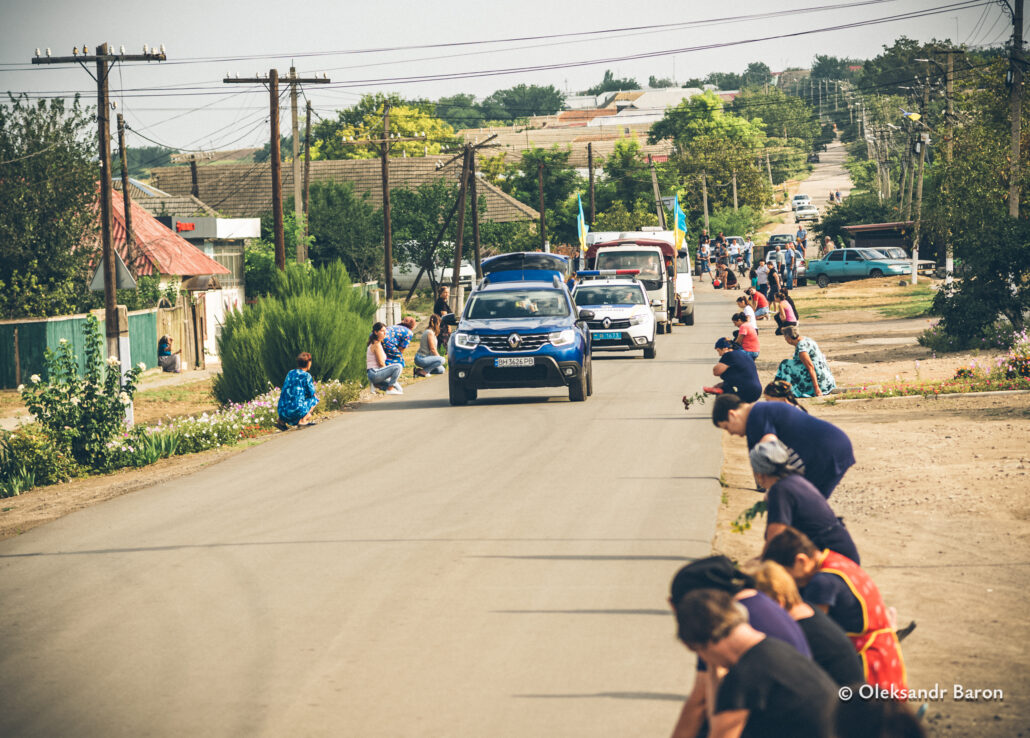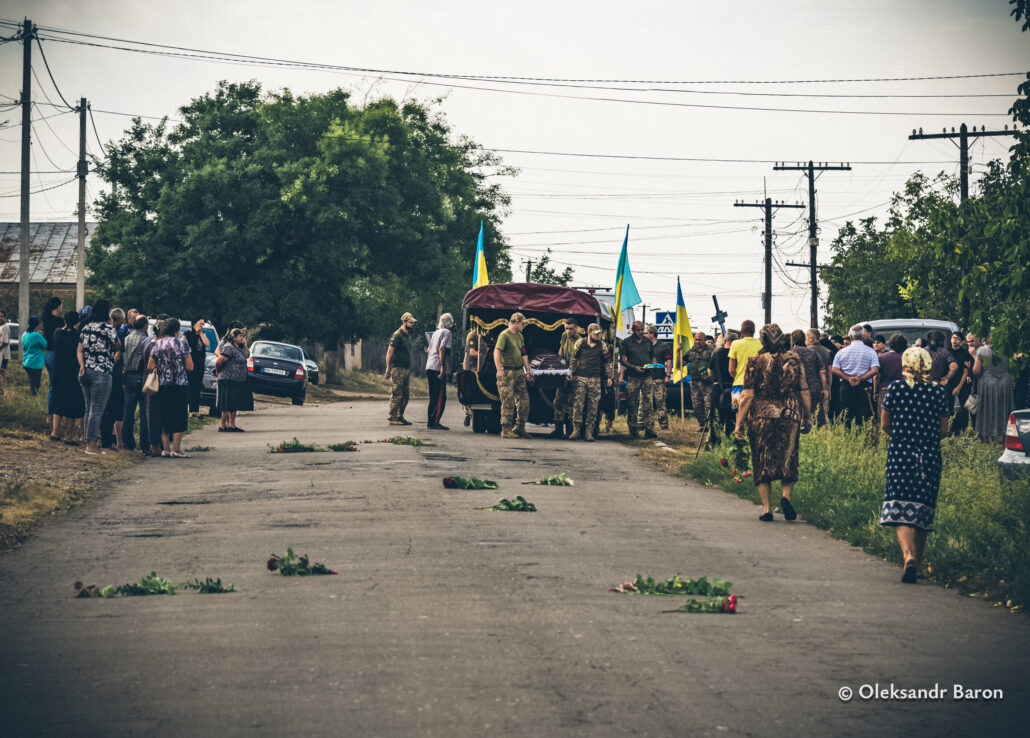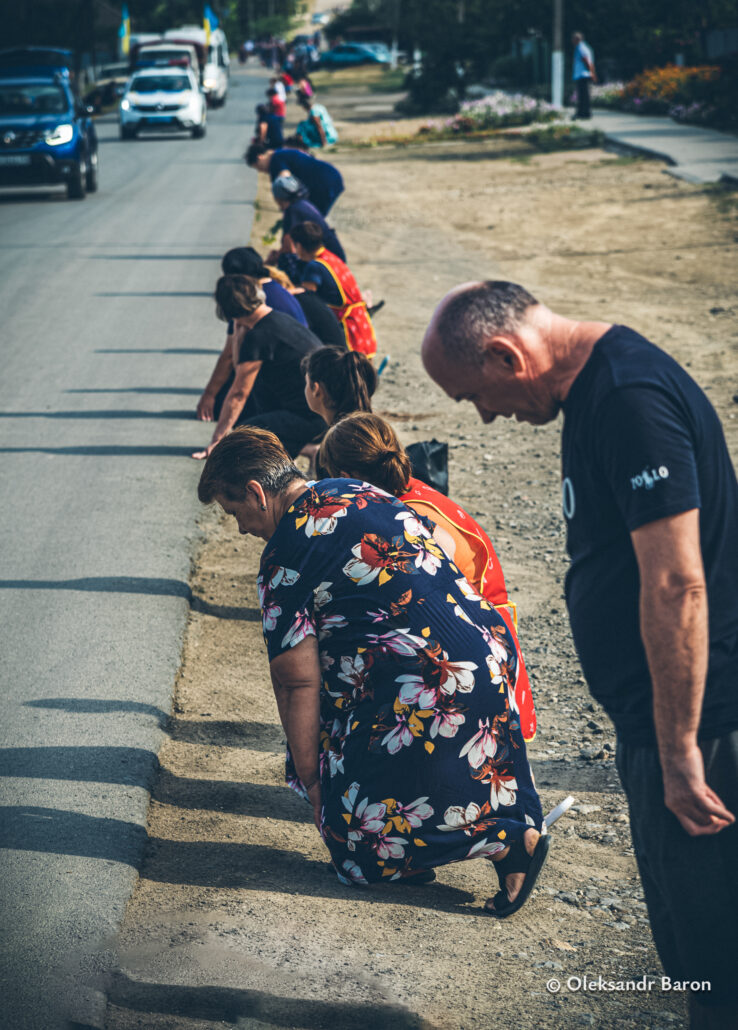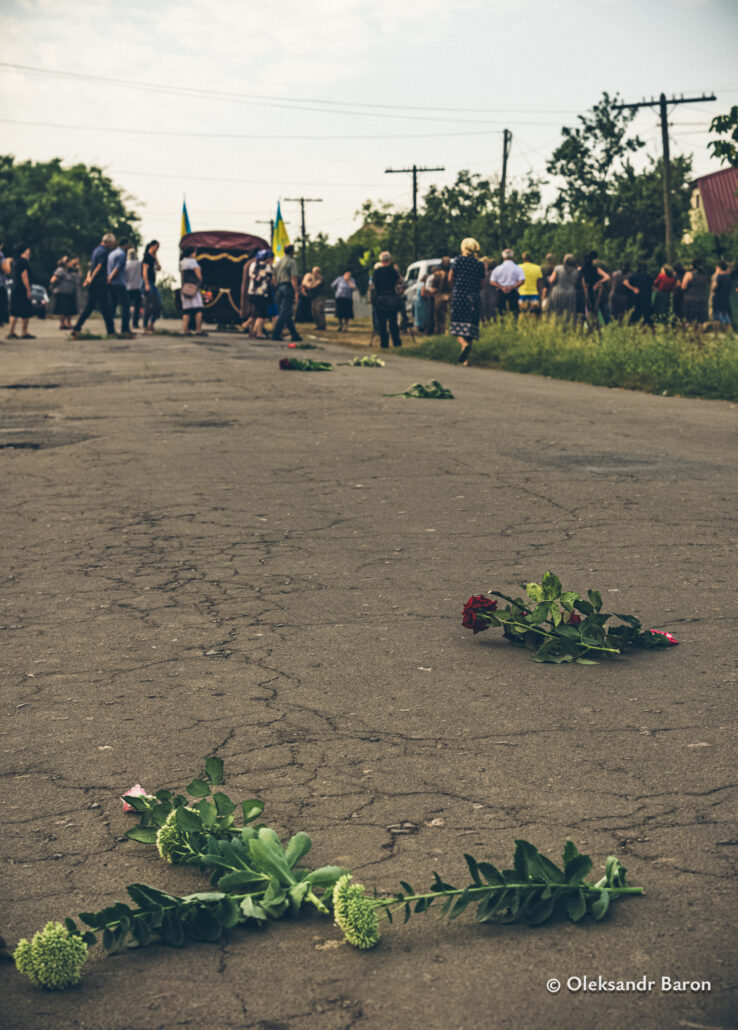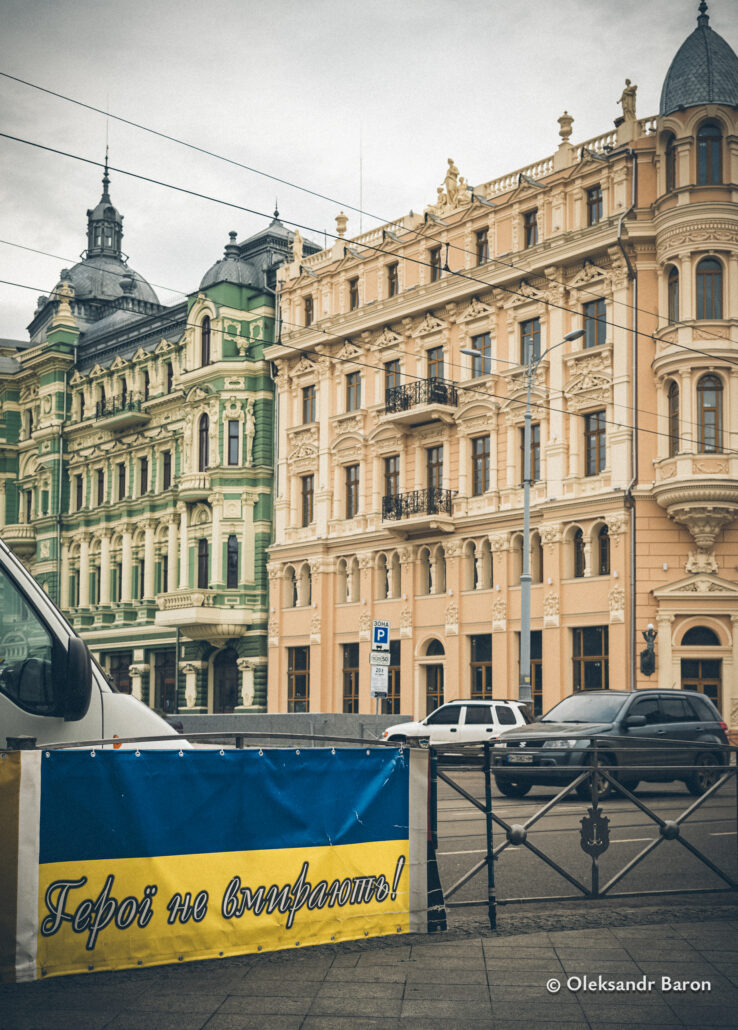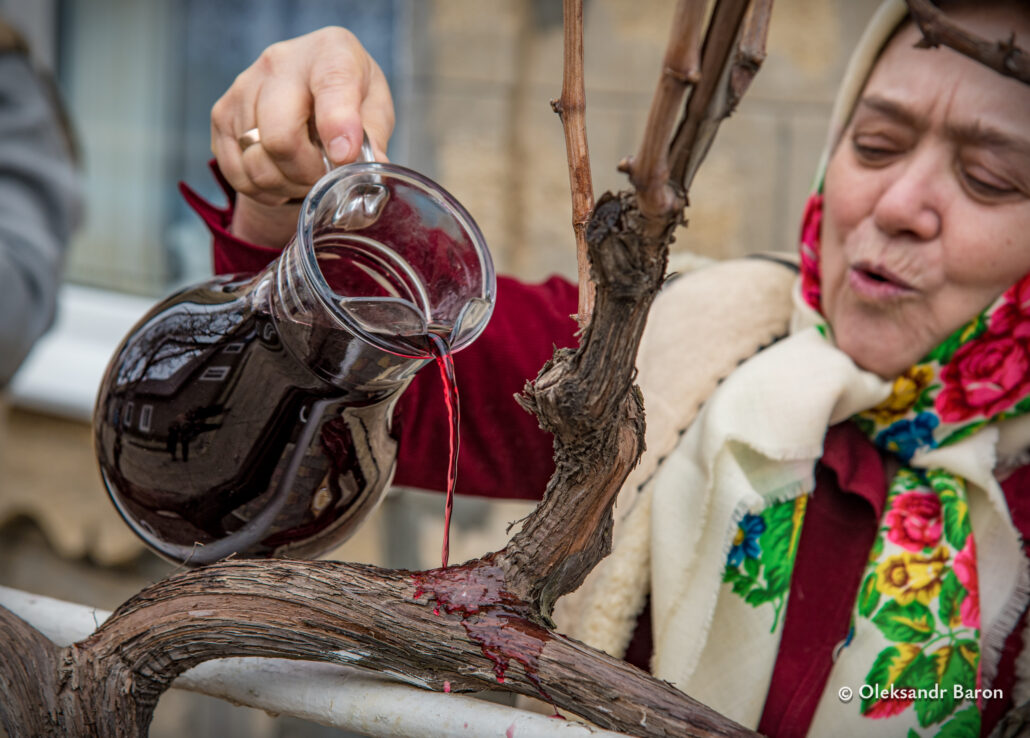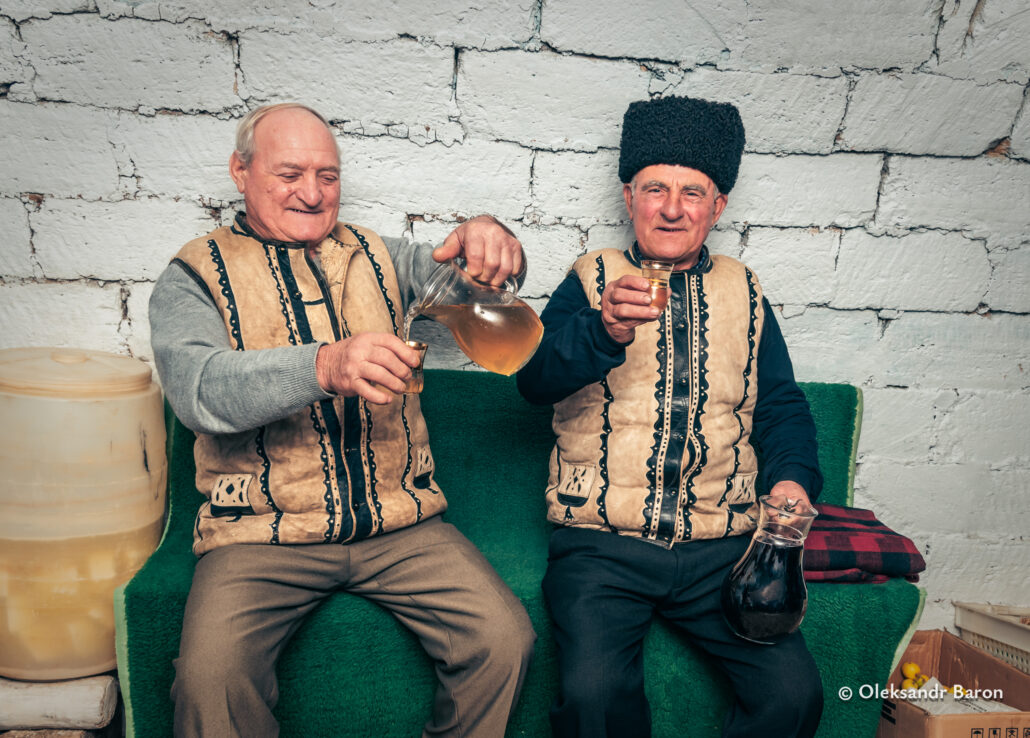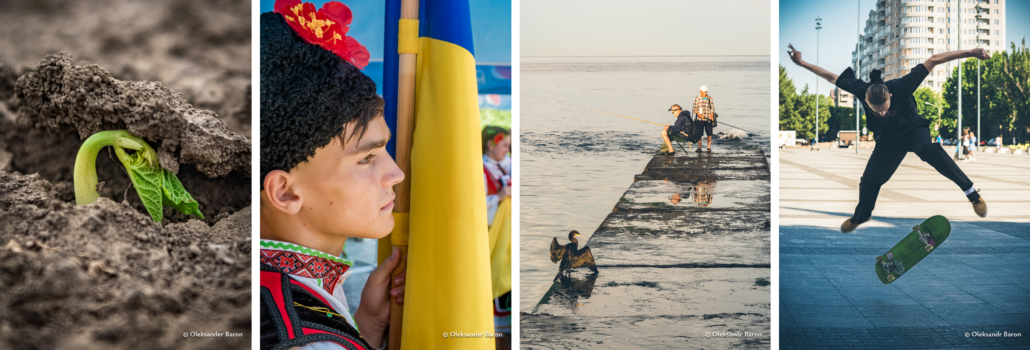Charity auction of photographs by Oleksandr Baron, Odessa, Ukraine, to benefit the Guards of the 11th Mykhailo Hrushevsky Brigade of the National Guard, part of the Security and Defense Forces of Ukraine, who heroically fight and sacrifice their lives for the victory of civilization over Terrorasha.
November 1-7, 2024, final on November 7, 2024 at 7 pm., Enakor Auction House, Sofia, Bulgaria
Oleksandr Baron is a Ukrainian ethno photographer, co-founder and editor-in-chief of the anti-propaganda informational project “Bessarabian Front”, a member of the National Union of Journalists of Ukraine. He is a member of the POWERFilm Production team and is the Internal Communications Director of the OKO International Ethnographic Film Festival. He has been working in the field of cinematography. He participated in the creation of the documentary about the village of Krynychnoye (Chushmeliy) “The Place of Power” and the documentary series “Vanishing Villages”, filmed for the Ukrainian public television UA, the documentary film “She”, as well as the documentary “Letters from the War”, filmed for the Ministry of Defense of the Republic of Bulgaria, directed by Tetyana Staneva. Baron holds a master’s degree in physics from the South Ukrainian Pedagogical University “K. D. Ushinsky” in Odessa.
Oleksandr Baron is a son of Ukrainian Bessarabia, ethnic Bulgarian. He was born in the village of Vessela Dolina, Bolgrad district, Odessa region on 13. 01. 1977. He lives in the town of Odessa. He has dedicated himself to the cause of preserving cultural heritage by photographing Ukrainian traditions. He became interested in ethnographic photography in 2017, when he attended a folklore festival in the Republic of Bulgaria for the first time. His first photo exhibition took place in 2018 in Balchik, Bulgaria. He had more than 20 individual exhibitions held in Ukraine and Bulgaria. His works cover the following main themes: the Bulgarian in me, the Bulgarian spirit in Ukrainian Bessarabia, the diversity of cultures and identities of the people of Ukraine, ethnographic cinema.
After the beginning of the full-scale war of the Russian Federation against Ukraine, when terror affects every Ukrainian on a daily basis, the topic of war also becomes of interest. Then he worked mostly in the backline. He continued to develop his expertise in ethnophotography, capturing the impact of military terror on the lives and world of the ordinary people, on the civilian population of towns and villages subjected to daily drone, ballistic and cruise missile, and planning bomb attacks. Over 110 photographs from this period were featured in his first charity exhibition and auction at the Enakor Auction House in Sofia, in early October 2023. The funds raised were used to support the soldiers of the Bolgrad “88th Separate Battalion of Marines”, of the Naval Forces of the Armed Forces of Ukraine, in which battalion serve mostly Ukrainian Bulgarians.
Just as Baron’s exhibition was being arranged in Sofia last year, the summons came for him to go to his military district. In the spring of 2024, Baron mobilized and became part of the Security and Defence Forces of Ukraine. Although he started military service, he continued to do photography and send me his new works, already taken in a military setting. With them, we prepared the new charity auction at Enakor Auction House. This time the funds raised will support the soldiers of the 11th “Mykhailo Hrushevsky” Brigade of the National Guard of Ukraine, who currently need to purchase 3D printers to produce parts for drones.
The catalogue begins with the “Symbols” series. This is a favorite subject of Oleksandr’s, which is represented by some of his now-famous photographs, such as the painted sunflower (Cat. No. 1, “A Sunflower Shot”) on the shot-up cars in which Kiev citizens tried to evacuate in the first days of the war; Oleksandr’s hand holding a shrapnel in “Life and Death” (Cat. No. 2); the destroyed stained-glass window from the rocketed “House of Scientists” in Odessa in “Butterfly” (Cat. No. 3), “Banksy’s Gymnast” (Cat. No. 11), etc. We also present new symbolic compositions, such as the tattoos “Will and Dignity” on the neck of a warrior (Cat. No. 7), “Children’s Drawings in a Military Observation Post” (Cat. No. 8), the displays of rusted rashist equipment in the central squares of Ukrainian cities (Cat. No. 10), interesting graffiti with messages to the rashists (Cat. No. 9), etc.
One theme of Baron’s, familiar from last year’s exhibition, is the destruction of war. It is presented in the “Burned Homes, Land and People” series. There are also quite a few symbolic photographs here, because it is the symbolic images and compositions that Oleksandr most often looks for in his works. Such examples are the decorated New Year’s Eve tree against the background of a missile-blasted multi-storey apartment block in Odessa (Cat. nos. 15-16); the crashed car with the sticker “Baby girl on board” (Cat. no. 17); the fiery explosion resembling the shape of a nuclear mushroom in a fire after a missile attack in Odessa (Cat. No. 20); the agricultural machine cultivating the fire-burned and de-mined land (Cat. No. 21); the torn wires of power lines dangling like the hands of desperate people over ripe wheat and green gardens (Cat. No. 23), etc.
The special aspect of his insight that attracted me the previous year, and for which I think it is valuable his art to be exhibited, is his talent for finding and extracting beauty from scenes of absolute horror, from scenes of destruction. He does it because his internal world cannot accept and come to terms with this total horror of the war in the external world – the savage destruction of civilization. Already on the spot, while looking at the object, his lens searches for and very often finds a way out. With his compositions and frames, Baron constantly demonstrates that there is a way out of the nightmare of savagery’s war with civilization, and that the way out is even here close by, right next to where the rocket exploded. Civilization has something to be born again from.
The elements of beauty in the ruins not only provide a model for a way out for the civilization being destroyed by the rashist savagery, but also have a therapeutic impact – both for the author and for us, the viewers. After three years of unjust war waged against them, all Ukrainians are deeply traumatized and need healing of their terrible traumas. Although to an incomparably lesser degree, we (who are watching from the sidelines) are also traumatized, because we know that it could have happened to us, and if the Ukrainians do not stand their ground – it may happen to us. Baron’s photographs heal not only Ukrainian wounds, but also our war wounds and fears – at least those of us who have not lost empathy after three years of war.
Bread was Oleksandr Baron’s favourite subject in his pre-war period – a representative subject for a Ukrainian, given that Ukraine is one of the breadbaskets of the world. In the series of ethnographic photographs, we present again some of his famous photographs of traditional bread (Cat. No. 72-73, 79, 81).
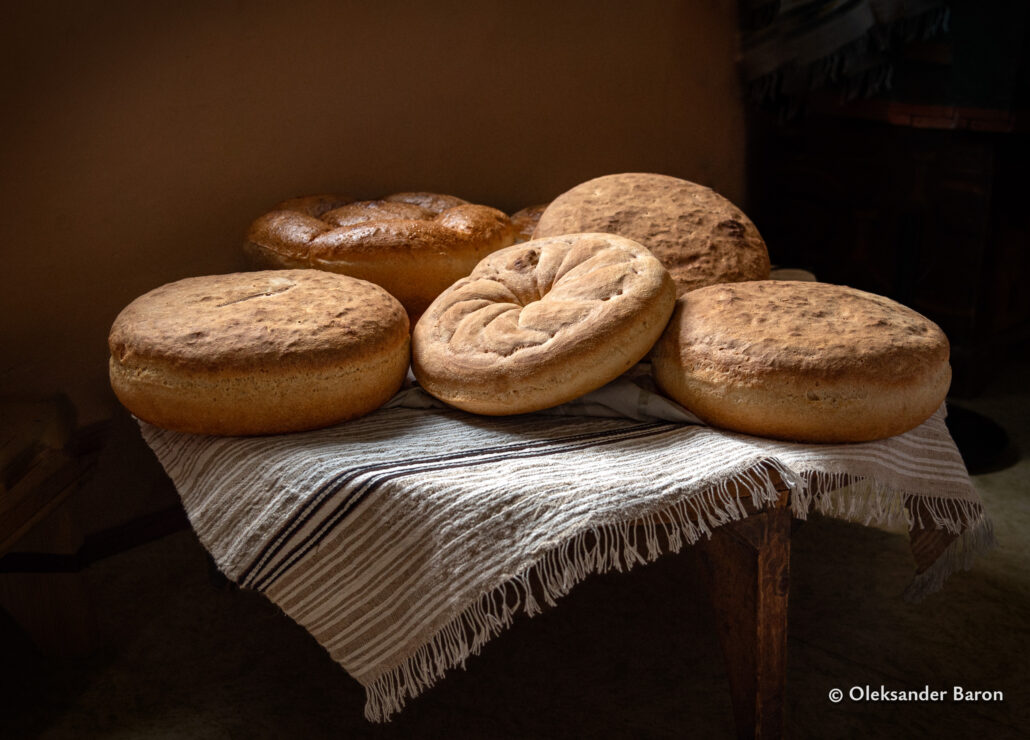
This year, however, there is a different kind of bread, which I have set down in a special series called “The Bread of War”. Before the war, Ukraine provided the bread for half the world, and now Western partners are providing mobile bakeries for Ukraine because Terrorasha is constantly hitting with missiles – not just grain warehouses, but bakeries as well. At the very beginning of the war, when the rashists reached but failed to take the big town at the mouth of the river Bug, Mykolaiv (which has several Bulgarian quarters), they shelled and destroyed its water supply system. Since March 2022, Mikolaiv has been without drinking water, and because of this, the bakeries, some of which were already destroyed by missiles, cannot operate.
At the beginning of the war, huge numbers of people from Europe and the US collected donations to buy Swiss mobile bakeries in Ukraine. On Ukraine’s Independence Day, August 24, 2024, more than 100 bakeries in Germany, the USA and elsewhere did a “Bakers for Bakers” action – they prepared and sold bread based on Ukrainian recipes. All the proceeds (over $40,000) have been donated to repair the mobile Ukrainian bakeries where, for the third year now, volunteers have been preparing bread for frontline residents in the de-occupied areas of Mykolaiv and Kherson. Oleksandr Baron is one of the founders of “Bake for Ukraine”, an organization dedicated to providing bread to the frontline areas. From this volunteer activity of his we have several pictures of the bread of the war in the backline (Cat. No. 24-27). You will see the unusual gentle and careful gestures with which a volunteer (a foreigner and a non-professional) kneads and shapes the rectangular bread loaves. The same volunteer is one of the organizers of the “Bakers for Bakers” action.
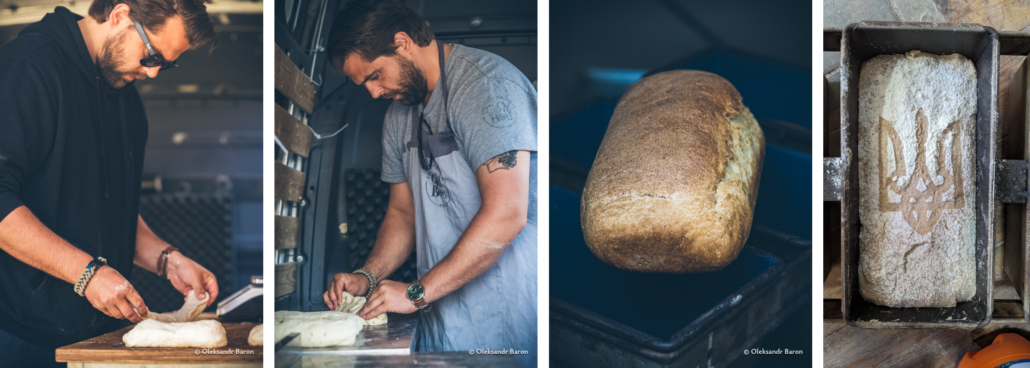
The other photographs with loaves of bread are from the trenches and bunkers on the second line of the Kherson sector. There Baron was part of the Ukrainian crew of the Ministry of Defense’s Military TV Channel, which at the end of 2023 made the film “Letters from the War”, directed by Tetyana Staneva. At the premiere of the film on 23. 02. 2024 at the Military Club in Sofia, the Ministry of Defense organized a photo exhibition of Baron “War vs. Life”, which marked the second anniversary of the beginning of the war. In several of the war series of the auction we present photographs taken during this period. Among them are the loaves in the trenches and the bunkers in which the soldiers on the second front line lived.
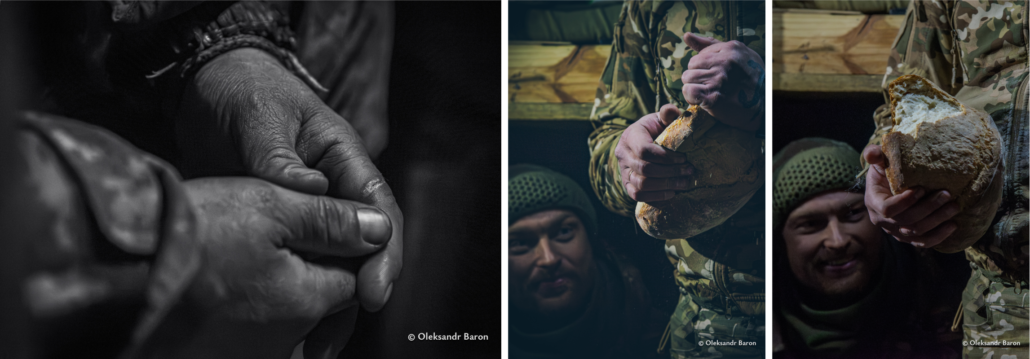
Olexandr’s magnificent images in the “Bread of War” series are the shots of the soldiers in the bunker breaking and distributing the round loaves of bread (Cat. nos. 28-29), brought as a gift by Olexandr and Tanya. Some loaves are from the mobile bakery, while others were kneaded and baked by traditional masters in the Bulgarian villages of Ukrainian Bessarabia. You will see the same round traditional Bulgarian ritual loaves of bread in the series of ethnographic photographs “Unbreakable” (Cat. No. 79-81), but in their usual ethnographic context.
The following series are from Oleksandr Baron’s new occupation – military photography. Footage of military action and training is featured in the series “In Action” (Cat. Nos. 30-36). One of Baron’s favourite genres, portraiture, is very strongly represented in the new series “Warriors’ Portraits” (Cat. Nos. 37-52). Make sure to pay attention to the warriors’ gazes – you will notice many differences from standard works in the genre. Moreover, this is not just due to the specificity of mask portraits, which are sometimes required in wartime for security reasons. In the last eighty years or so, we have forgotten the eyes of war, but now it becomes imperative to recall them, to remember them, and to prevent ourselves from beginning to see with such eyes as well.
The eyes of war, the eyes of the Ukrainian warriors, are something quite different from all the kinds of eyes we are used to – sometimes there is fear and terror in them, but also a huge determination for victory or sacrifice. They read “Freedom or death!” It is hard to bear to look at them from the side of the calm, comfortable and happy existence we have here. I, at least, find it very difficult. Besides the serious and determined ones, there are the super smiling eyes that go to the sacrifice with a happy smile and even some sense of cheerfulness, as if they were immortal. They are even harder to bear to look at.
Writing about the portraits of the warriors, I suddenly became aware of a grave sense in the work of the professional war photographer, in the work of Oleksandr. It applies to the work of any artist who has become a military defender of his country, because it represents the function of any art form in wartime. This is something I had never thought about before. Warrior portraits are made to be sent to mothers and wives so that they in turn can have the images of beloved sons and husbands before their eyes, and keep their spirits high as much as possible. Yes, however, portraits have another function. They become a necessary sacred object in a ritual that very often has to be performed – the ritual of sending off fallen heroes. Apart from being carried in procession and laid at the funerals in temples, these portraits were also placed on the heroes’ memorial plaques. Remember this duality when you look at the smiling faces and proud poses of those portrayed. These are portraits of self-sacrificers, of possible mortal-immortal members of the Heavenly Host of Ukraine.
Moreover, in his war photography, as he loved in the pre-war, Oleksandr never ceased to notice and frame the pure beauty, the cheerfulness, the fun. He also continues to direct his lens with a sense of humour even in war subjects. You will see this type of photographs in the “Warriors’ Joys” series (Cat. No. 53-55) – the cordial communication with a fellow warrior-dog; watching the European Football Championship on mobile phones; the socks decorated with pineapples.
The series of war photographs ends – as in reality – with the theme of death. It was only in the third year of the war, at the very end of his civilian life, that Oleksandr was able to gather the strength to pick up the camera to capture the most terrible thing, the loss of the most precious thing – human lives. Ukraine has lost and continues to lose a huge part of the most educated, most talented, most successful and most potentially young men and women. It is losing them because Terrorasha kills. This is the rashist genocidal goal – to destroy the Ukrainian nation and culture by destroying the people of Ukraine. And for three years now it still cannot be stopped from blasting with rockets and planning bombs deep into the land – at Ukrainian shops, train stations, homes, infrastructure, hospitals, nursing homes and kindergartens…
I named the “Heavenly Host” the series dedicated to the dead heroes of Ukraine, after the “Heavenly Hundred”, as the protesters killed by snipers on Maidan in February 2014 were called. In these photographs, Baron documents the relationship of the living to the dead heroes – the sending of the heroes on their way to the beyond and the tributes paid to them (Cat. Nos. 56-61). There is no more powerful approach to represent the national psychology and spirit of the Ukrainian nation than to represent the way in which the defenders who died in the war are sent off. The people of the settlement line up all the way to the cemetery, fall to their knees, bow their heads and strew the road in front of the catafalque with beautiful flowers.
At the heroes’ send-offs, a recent tradition has been to perform a remarkable mournful Ruthenian (Rousian, Lemkiv) folk song from western Ukraine – “Plive/Plyne kacha po Tisini” (A duck swims on the Tissa). In traditional versions, the lyrics tells of the life and death of a young girl who refuses her mother to marry a man she does not love. In the 1940s, the Transcarpathian writer Vasyl Grendzha-Donsky, to tell the story of a soldier preparing to go to the front, reworked the lyrics. The duck in the river, according to a millennial tradition, represents a metaphor for death and the passage to the beyond. During World War II, the song became part of the repertoire of the Ukrainian Uprising Army. In the present century, it has been used at funerals and memorials for the more than one hundred protesters killed on Maidan during the 2014 Revolution of Dignity. The tradition continues today in ceremonies for the funerals of the fallen heroes in the Terrorasha’s war against Ukraine.
Duckling Swims down the Tisya
Oh, a duckling swims down the Tysa,
A duckling swims down the Tysa.
My mother, oh, do not scold me,
My mother, oh, do not scold me.
Oh, you scold me at a bad time,
You scold me at a bad time.
I myself do not know where I’ll die,
I myself do not know where I’ll die.Oh, I will die in a foreign land,
I will die in a foreign land.
Who then will dig my grave for me?
Who then will dig my grave for me?
Oh, strangers will dig my grave,
Strangers will dig my grave.
Won’t you grieve for me, mother?
Won’t you grieve for me, mother?
Oh, how could I not grieve for you, my son?
How could I not grieve for you, my son?
You’ve always lain upon my heart,
You’ve always lain upon my heart.Oh, a duckling swims down the Tysa,
A duckling swims down the Tysa
I have placed at the end the works from the longest series “Unbreakable” (Cat. nos. 62-90) to end on a positive note – with the joy Oleksandr gives us with his interest in the life and world of the common people, as well as in the theme of the ethnic diversity of the traditional cultures of Ukraine.
This year, the ethno-photographs in Oleksandr Baron’s auction at Enakor Auction House focus entirely on the traditional culture and beauty of life of Ukrainian Bulgarians. Baron shows us that both before the war and in its third year, our compatriots from the unoccupied territories of Ukraine continue to sow, reap, harvest the fertile land of Bessarabia, make wine and brandy, raise flocks and herds, honour the traditional Bulgarian celebrations with our millennia-old rituals, delicious meals and wines, rejoice and have fun. We want to show and make sure that the Ukrainian spirit is truly unbreakable and will endure the victory over Terrorasha.
With the funds raised at the auction, we will make our modest contribution to this victory, and we will give moral support and hope – both to our compatriots, the Bulgarians in Ukraine, and to all Ukrainians who are resisting Terrorasha not only for their own sake, but also for ours.
Rositsa Gicheva-Meimari, PhD in Art History, senior assistant professor in the section “Art Studies and History of Culture” and member of the Centre “Bulgarian-European Cultural Dialogues” at New Bulgarian University
24. 09. 2024
- Olexandr Baron Auction 2023
- I get information about the history of the war in Mykolaiv from one of my closest Ukrainian friends – Svetlana Shchestnyak and her family.
- Thanksgiving video of Ukrainians for the action “Bakers for Bakers” – https://www.facebook.com/watch/?mibextid=UalRPS&v=426567209973958&rdid=8tFP7DW1nM2MOjLL
- See Letters from the War 2024
- See Premiere of Letters from the War 2024
- See Videos of sending off fallen warriors
- Rοusy, Rοusyns (Rοusnaki) is the self-name of an ethnic-ethnographic group in south-western Ukraine and in the lands over the border with Poland and Slovakia, who are hypothesized to be probable descendants of a population of Kievan Rus, whose dialect “Rousinian/Ruthenian” is thought to be a descendant of the Proto-Ukrainian language. Today the dialect is classified as one of the dialects of the Carpathian group of the south-western dialect of Ukrainian – see Gritsenko 2000a; Gritsenko 2000b. And by linguists who consider Ruthenian to be a separate language, it is classified as belonging to the western group of the Carpatho-Rousian dialect area – see Vanko 2009. The names Rousy, Rousyns or Rousinki in the Carpathian region of Ukraine have nothing to do with the name “Rossia” and Russians, which was appropriated by literary sources (from the ethnonym in Byzantine Greek) in the 16th-17th centuries by the Moscow princedom, which became an ethnonym of populations in Tsarist Russia, the Russian Empire, USSR and the Russian Federation today.
- Performance of “Gay, Plive Kacha” 2020 https://youtu.be/cGwEBN1dGFQ?si=UjveTmzISqqpqJkh ; Performance of “Plive Kacha” 2022 https://youtu.be/hR0FS02nhoo?si=H8lFMt1pV5kUj8To
- Wikipedia: A Duckling Swims in the Tisza
- Падяк: 2017
- Sokil 2014: 817-821
- Crossan 2014
- Videos of sending of fallen warriors
- Translation Duckling Swims down the Tisya https://lyricstranslate.com/en/pikkardiyska-tertsiy-plyve-kacha-po-tysyni-english#songtranslationа „Плува патица по Тиса“2014
Bibliography
Crossan 2014: Crossan, Andrea. An old Ukrainian folk song takes on new meaning in the current crisis – The World, April 16, 2014.
Gritsenko 2000a: Гриценко П. Ю.. Лемківський говір, Українська мова: Енциклопедія. — Киев: Українська енциклопедія, 2000. http://litopys.org.ua/ukrmova/um172.htm Посетена на 24. 09. 24 г.
Gritsenko 2000b: Гриценко П. Ю. Південно-західне наріччя, Українська мова: Енциклопедія. — Киев: Українська енциклопедія, 2000. http://litopys.org.ua/ukrmova/um159.htm Посетена на 24. 09. 24 г.
Letters from the War 2024: Филмът на ВТК „Писма от войната. Писмо 1 – Пулсът на Украйна“ – филм на Тетяна Станева по поръчка на Министерството на отбраната на Република България, с премиера в Централния военен клуб на 23.02.2024 г.- https://armymedia.bg/2024/02/23/%D1%84%D0%B8%D0%BB%D0%BC%D1%8A%D1%82-%D0%BD%D0%B0-%D0%B2%D1%82%D0%BA-%D0%BF%D0%B8%D1%81%D0%BC%D0%B0-%D0%BE%D1%82-%D0%B2%D0%BE%D0%B9%D0%BD%D0%B0%D1%82%D0%B0-%D0%BF%D0%B8%D1%81%D0%BC%D0%BE-1/ Посетена на 25. 09. 24 г. –
Oleksandr Baron’s Auction 2023: Oleksandr Baron’s Auction “The People of Ukraine through Peace and War” at Enakor Auction House, October 6, 2023 – https://enakor.com/the-people-of-ukraine-through-peace-and-war/ ; Catalogue – https://view.publitas.com/enakor-1/catalogue-a39-ukraine-en/page/1 – Accessed on 25. 09. 2024
Paddyak: 2017: Падяк, В. Плаве кача по Тисині: Перша світова війна у карпаторусинському пісенному фольклорі. Ужгород : Вид-во В. Падяка, 2017. https://padyak.com/uploads/pdfs/290/290_1_636603785958593750.pdf – Посетена на 24. 09. 24 г.
Performance of “Gay, Plive Kacha” 2020: Гей, пливе кача в изпълнение на Піккардійська Терція, 2020. https://youtu.be/cGwEBN1dGFQ?si=UjveTmzISqqpqJkh Посетена на 24. 09. 24 г.
Performance of “Plive Kacha” 2022: Kyiv Soloists perform Ukrainian folk song – Stockholm Concert Hall, 2022 – https://youtu.be/hR0FS02nhoo?si=H8lFMt1pV5kUj8To Посетена на 24. 09. 24 г.
Sokil 2014: Sokil, V. О песне «Плыве кача по Тысыни» – Narodoznavchi zoshyty 4 (118). 2014. с. 817-821.
Thanksgiving video of Ukrainians for the action “Bakers for Bakers” – https://www.facebook.com/watch/?mibextid=UalRPS&v=426567209973958&rdid=8tFP7DW1nM2MOjLL
Translation “Duckling Swims down the Tisya” https://lyricstranslate.com/en/pikkardiyska-tertsiy-plyve-kacha-po-tysyni-english#songtranslation Accessed on 11. 10. 2024
Vanko 2009: Ванько Ю. Русиньскый язык. Карпатьскы русиньскы діалекты. Класіфікація карпатьскых русиньскых діалектів. В: К вопросам вжываня русиньского языка в конфесійній сферї на Словакії. Академія русиньской културы в Словеньскій републіцї. Семінарь: Хрістіаньскы церькви выходного обряду і формованя народной ідентічности карпатьскых Русинів, МРК Пряшів, 5. новембра 2009. http://www.rusynacademy.sk/rusynski/rusyn_jazyk.html#%D0%9A%D0%B0%D1%80%D0%BF%D0%B0%D1%82%D1%8C%D1%81%D0%BA%D1%8B_%D1%80%D1%83%D1%81%D0%B8%D0%BD%D1%8C%D1%81%D0%BA%D1%8B_%D0%B4%D1%96%D0%B0%D0%BB%D0%B5%D0%BA%D1%82%D1%8B Посетена на 25. 09. 24 г.
Videos of sending off fallen warriors: – https://youtu.be/gevggf_KqLI?si=BERsQFLDl-HVnQNw ; https://youtu.be/91xHqOPGjAo?si=L8cLQvJaAihQwhi7 ; https://youtu.be/O2RcecfngK8?si=nhp8y-4bHtbXaUSL , Посетени на 24. 09. 24 г.
War vs. Life 2024: Exhibition “War vs. Life” by Oleksandr Baron in the Military Club in Sofia, 23.02.2024 – https://armymedia.bg/2024/01/21/%D0%B2%D0%BE%D0%B9%D0%BD%D0%B0-vs-%D0%B6%D0%B8%D0%B2%D0%BE%D1%82/ Accessed 12. 10. 24.
Wikipedia: A Duckling Swims in the Tisza https://en.wikipedia.org/wiki/A_Duckling_Swims_in_the_Tisza Accessed on 11. 10. 2024

